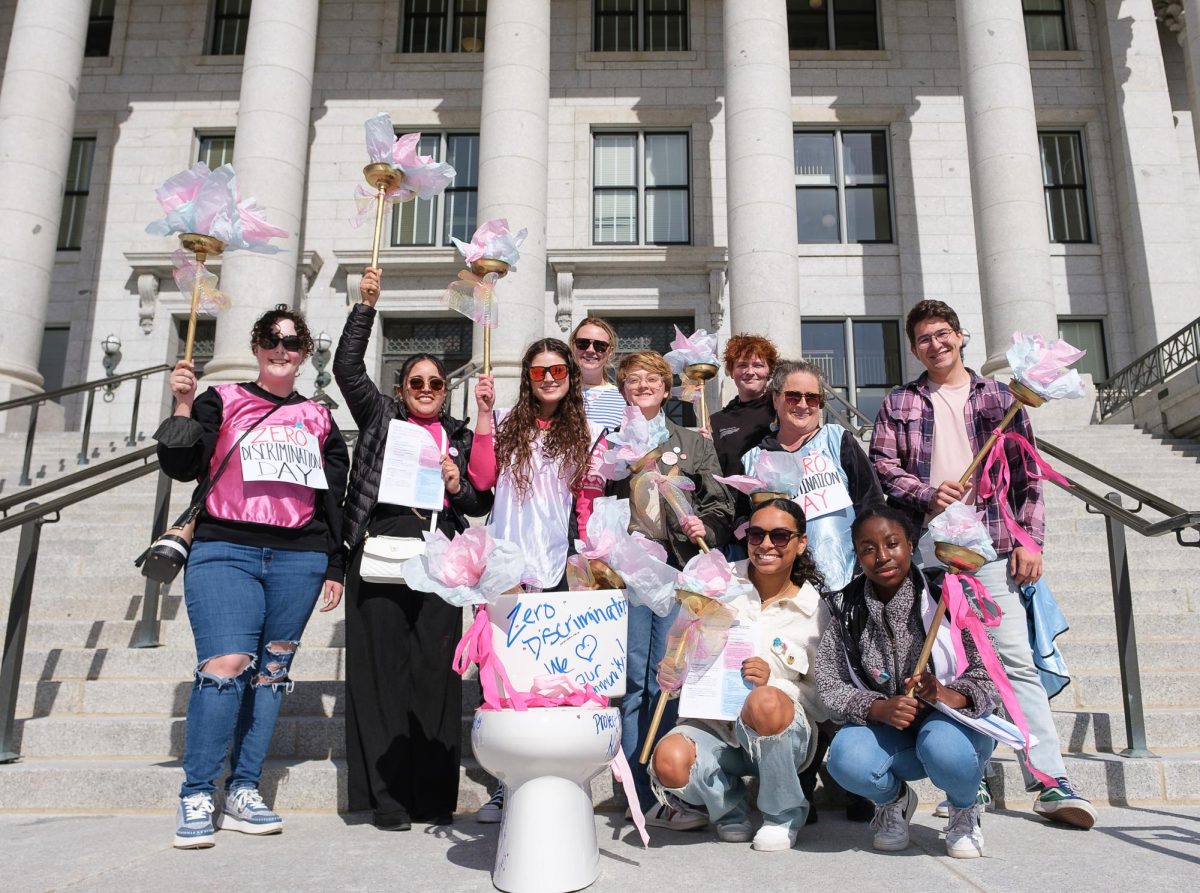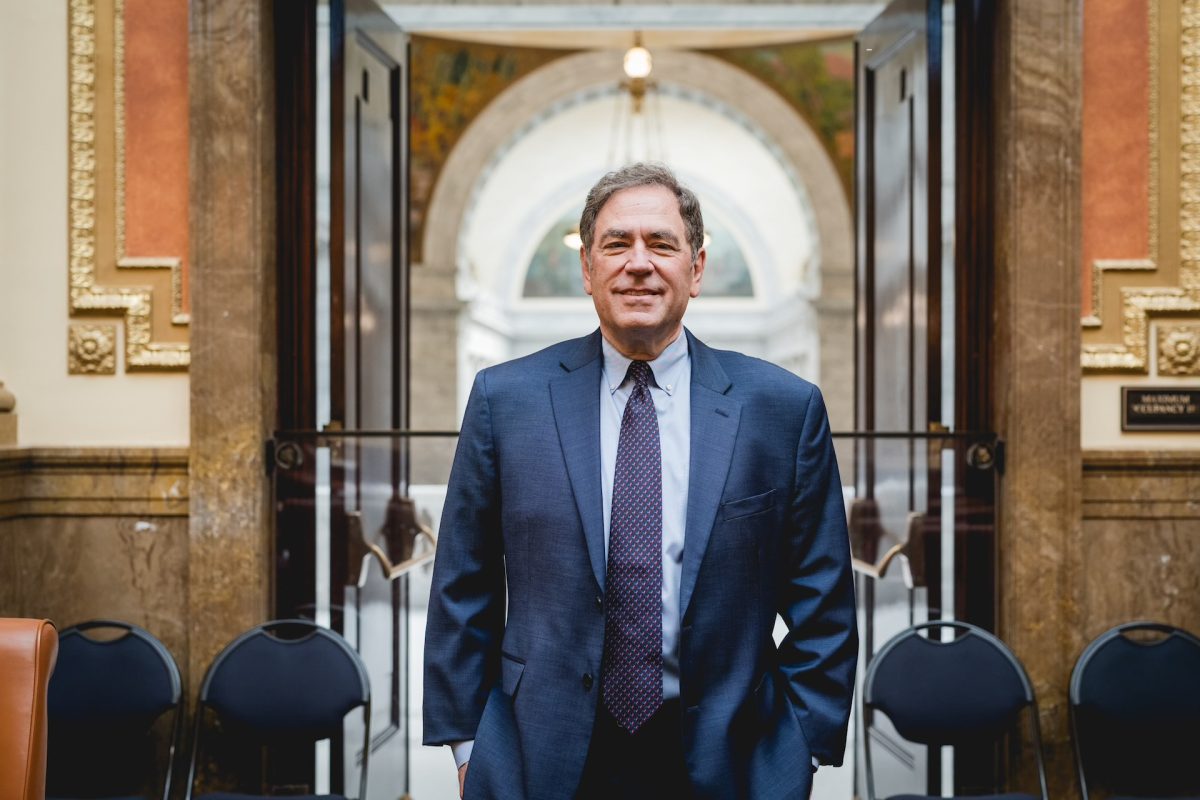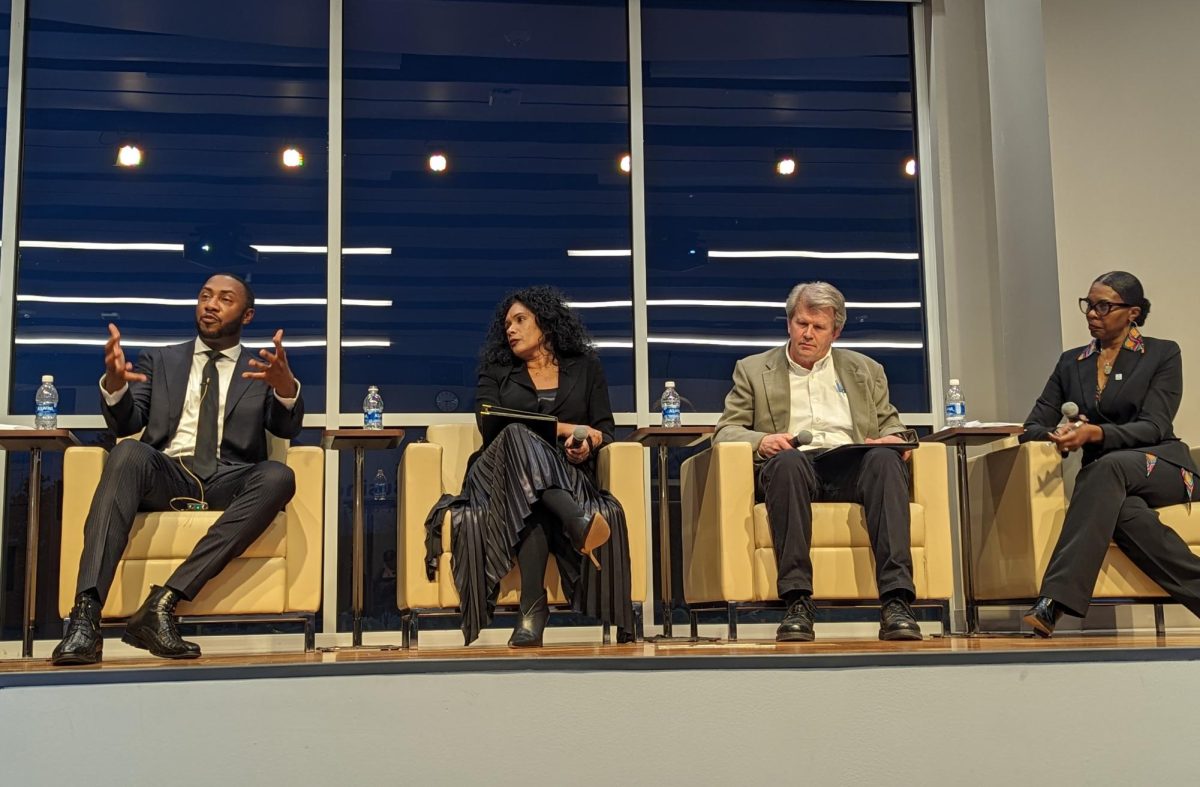
for a photo. Photo courtesy of S.J. Quinney College of Law.
He addressed the case of Doyle Randall Paroline v. Amy Unknown. Paroline was found guilty in 2009 of possessing child pornography, including images of the defendant. Cassell said there is no doubt Paroline is guilty of possessing child pornography.
In his argument, Cassell dealt with the complex issue of possessors and distributors of child pornography paying restitution to the victim. He used Amy’s case to argue that those caught in possession of child pornography should be “jointly and severally liable for her full losses along with other defendants convicted in other cases.”
Amy, the victim in question, was eight years old when her uncle raped her to produce child pornography. Since the uncle’s sentencing in 1999, Amy has discovered the large-scale internet circulation of her images and has suffered additional psychological abuse as a result.
James Marsh, a children’s rights lawyer, and Cassell have won 180 cases of restitution for Amy.
The reasoning goes that if each person caught is responsible for the entire amount owed to Amy — a total of $3.4 million in psychological therapy and compensation for lost work — the restitution would be paid more quickly.
“The issue that comes up is, should any one defendant be liable for [the restitution],’” Cassell said.
One factor in Cassell’s argument that each defendant should shoulder the full $3.4 million until the total is collectively paid off is that Amy’s suffering has greatly increased.
“It has become clear that she has much greater psychological costs,” Cassell said.
The brief states that Amy could not complete college and has difficulties engaging in full-time employment because “she fears encountering individuals who may have seen her being raped as a child.”
The argument over how to justly administer restitution reached the Supreme Court after lower circuit courts issued conflicting statements. In the brief, Cassell argues in support of the decision of the Fifth Circuit Court of Appeals, which ruled that all defendants involved with the same victims should individually be liable for the full restitution to the victim.
The Supreme Court considered many aspects of this thorny issue. Supreme Court Justice Stephen Breyer said in the hearing that there is a problem in child pornography cases.
“Congress clearly wants restitution. Makes sense to me. But if a thousand people look at it, then each one can say, ‘But I didn’t cause more than a tiny fraction at most, and so there virtually is no restitution, right?’ Now, every one of the thousand says that, truthfully, and so therefore the victim gets no restitution,” Breyer said.
That result, he said, is the opposite of what Congress wants. The government, however, does not find a thousand perpetrators, Breyer said.
“You know, it only finds two or three. And so [there are] going to be 997 who escape,” Breyer said. “And those three, what should they pay? What — should they pay nothing? Should they pay the whole thing? Should it be somewhere in between?”
Cassell said his mission at the Supreme Court was to convince the judges that the Fifth Circuit ruling was correct.
The case fell into Cassell’s area of specialty, as some of the classes Cassell teaches focus on victim rights.
“It’s a continuation of my longstanding efforts,” he said.
Two of Cassell’s third-year students, Jeremy Christiansen and Taylor Mosolf, worked closely with him on the brief and traveled with him to Washington.
Cassell said the College of Law is “actively involved in important legal cases around the country and continues to be involved.”
[email protected]
















